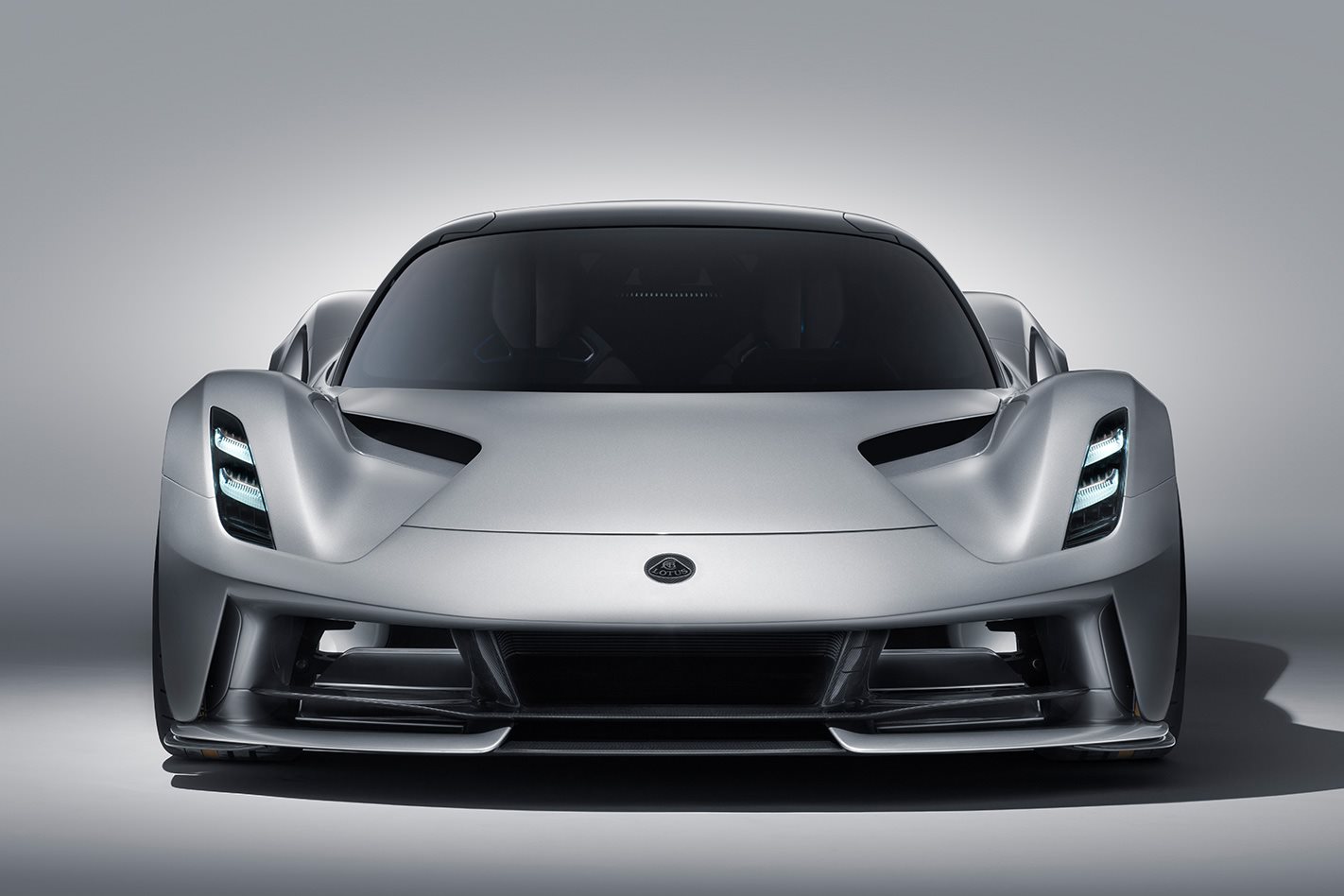Lotus can usually be relied upon to develop aggressively light sports cars. The problem is electric vehicles are fundamentally weighty things, a heavy battery pack being something that would have founder Colin Chapman rolling in his grave. With the reveal of the Evija hypercar, the company steps up into a big league with an electric vehicle that aims to rewrite the rule book.
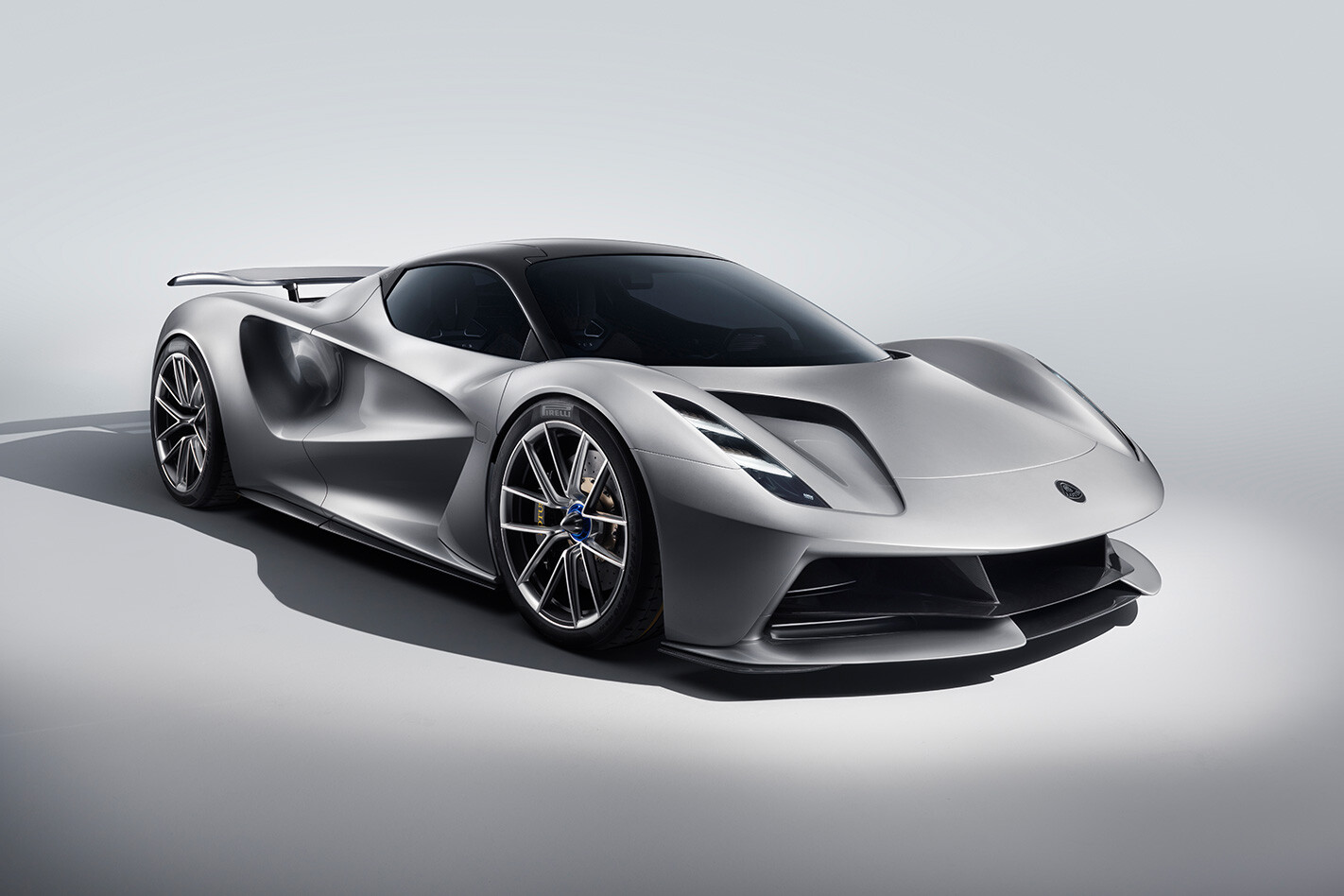
The headline figures are about what you’d expect from an ultra high-end battery-powered coupe. Zero to 100km/h vanishes in less than three seconds, top speed is pegged at 320km/h and there’s a pure electric driving range of some 400km. The power target is 2000PS, which translates to 1471kW, but the most intriguing stat is the kerb weight of 1680kg.
That’s in the same ballpark as a Porsche 911 Turbo - itself hardly a whale-like contrivance – and that figure comes about courtesy of Lotus’ very first carbonfibre monocoque chassis, built by CPC in Modena, Italy. By contrast, the NIO EP9, which claimed the Nurburgring lap record, weighed over 50kg more.
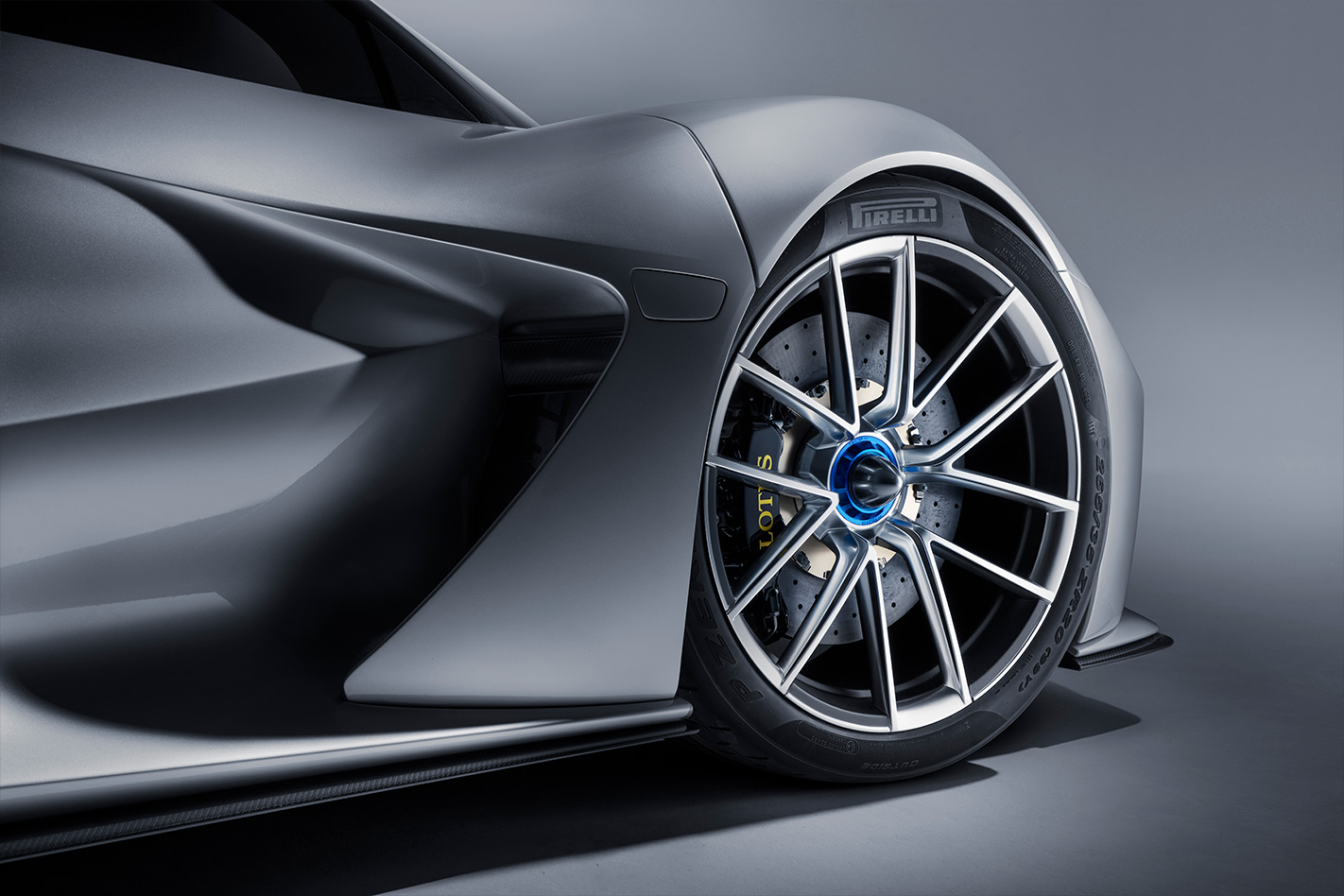
Production is due to start in 2020, with just 130 units set to be built, reflecting the model’s internal ‘Type 130’ designation. The price? That’ll be £1.7m (A$3m) plus duties and taxes. A £250,000 (A$445K) deposit secures a production slot, with direct orders accepted via the website at www.lotuscars.com.
The Evija (the name means ‘the first in existence’ or ‘the living one’ – representative, according to Lotus, of its pioneering approach) will be built at the company’s Hethel, UK, plant. And while it incorporates tech unseen in Lotus road cars to date, there’s certainly a nod to the manufacturer’s 71-year sporting heritage.
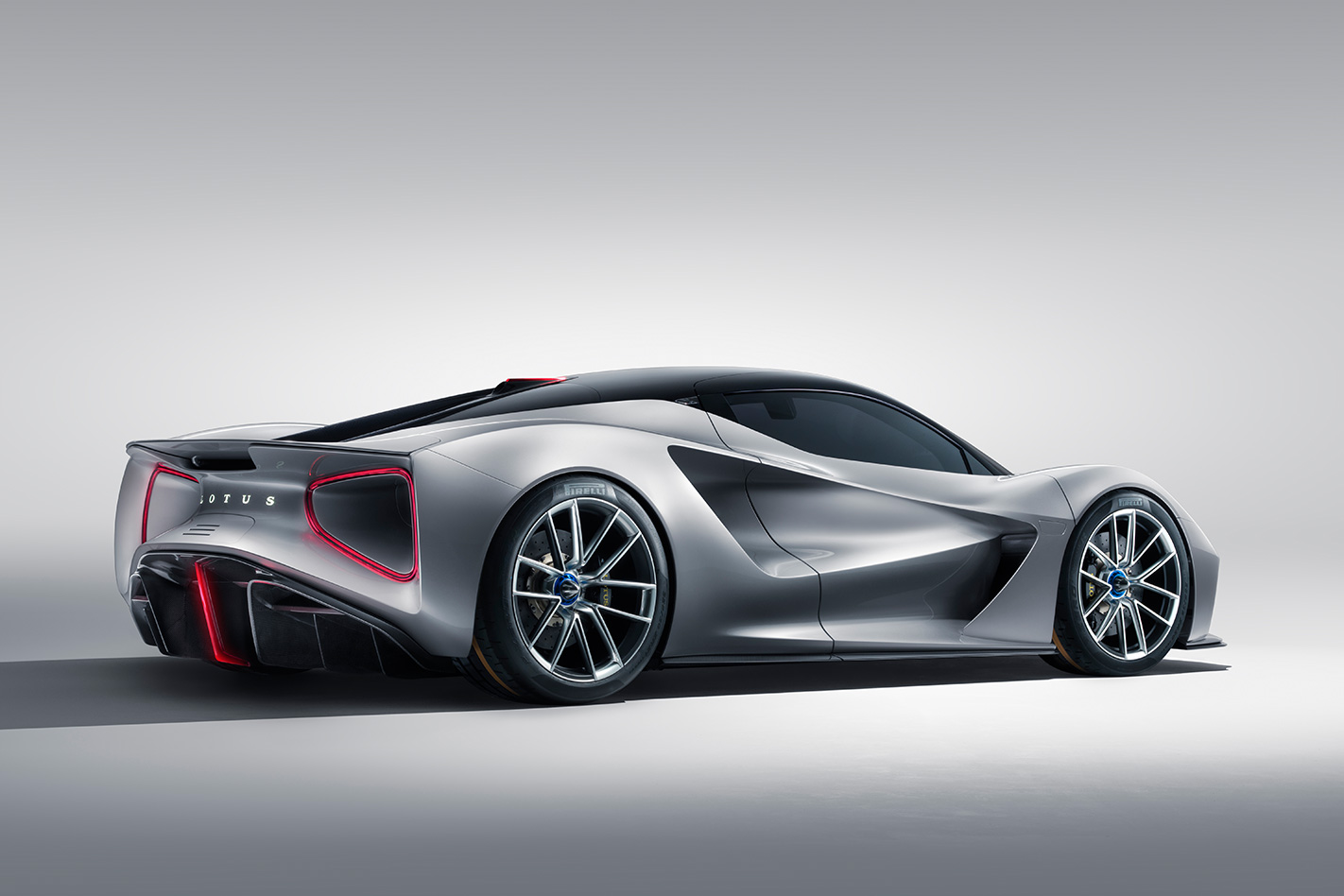
The Evija features a motorsport-inspired Venturi tunnel through each rear quarter, reminiscent of the rear-end shape that Aston Martin is developing with its Valkyrie and AMG has refined with its One model.
Lotus Cars’ design director, Russell Carr, said: “We studied how Le Mans race cars use air flow creatively to go over, under and around the vehicle, but also through it. This concept of ‘porosity’ is key to the Evija and has enabled us to create a timeless design with exceptional amounts of downforce.”
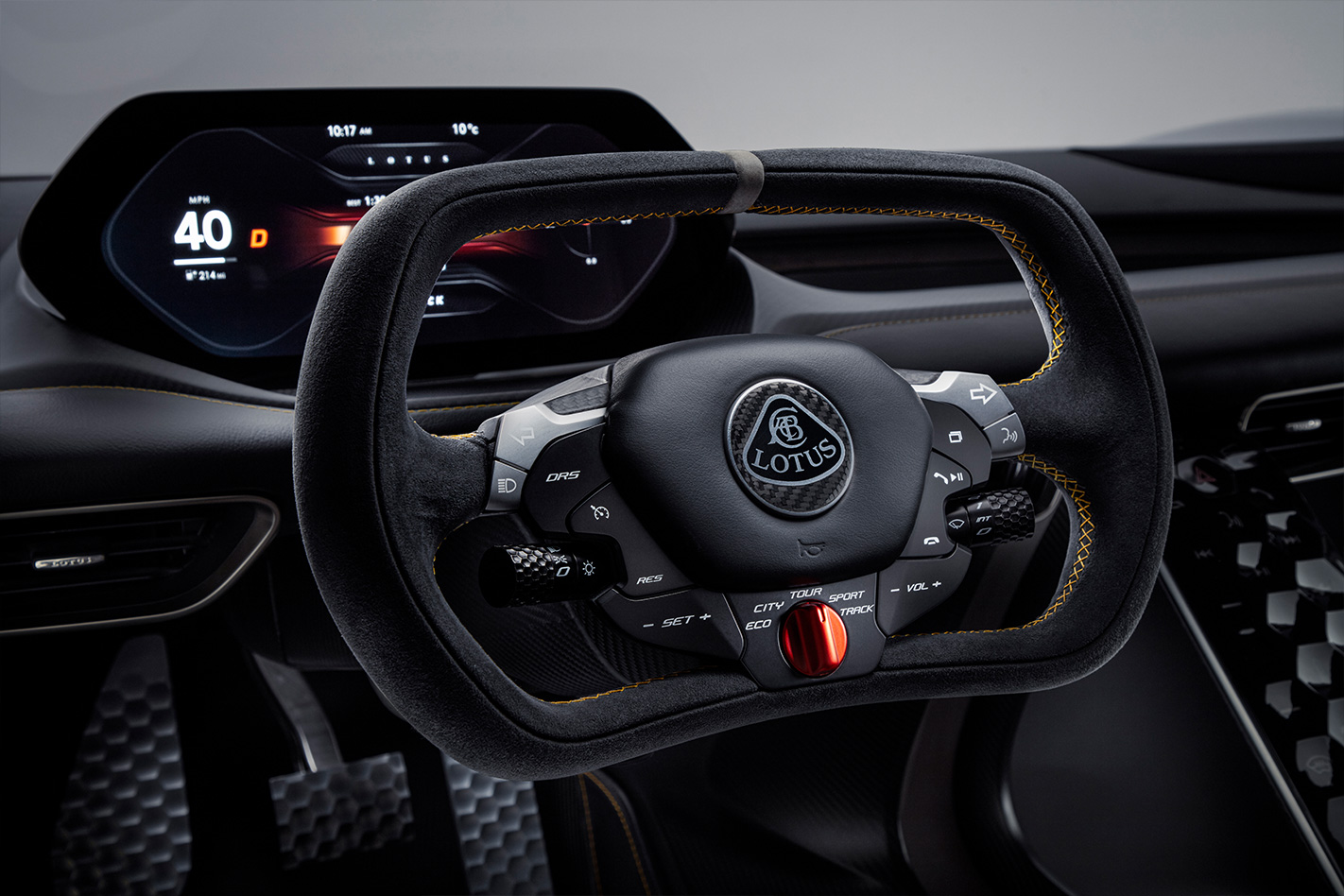
It’s certainly an arresting-looking thing. Although you might just be able to see hints of Ferrari or Pininfarina Battista about the front end and those flanks might bring to mind the latest Ford GT, it’s still an intriguing piece of styling. When viewed from the rear, each Venturi tunnel is edged by a red LED, creating a strong lighting signature. The indicators are enclosed within the corners of the red ribbon, while the reversing light is integrated into the illuminated ‘T’ of the ‘LOTUS’ badge, which sits above the charging flap.
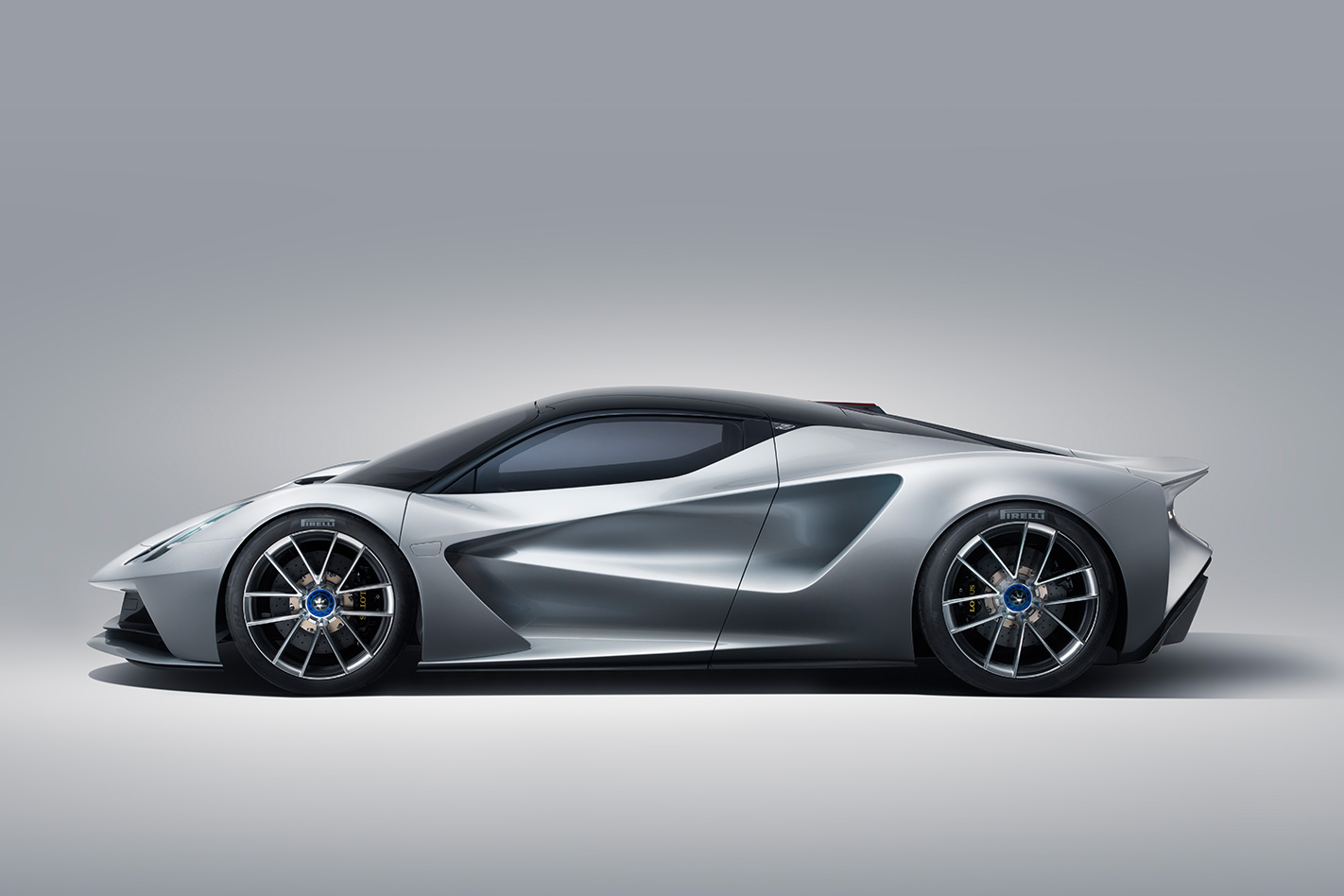
The jutting bi-plane front splitter directs air in three directions. The main intake channels air to cool the battery pack, while the outer intakes cool the front e-axle. There’s an active rear spoiler and what Lotus claims is an F1-style Drag Reduction System, both of which are engaged when the car’s switched into Track mode. There are no door mirrors, Lotus instead utilising discreet cameras that display on three separate interior screens.
The cabin is designed around a ‘floating wing’ dashboard with visible-weave carbonfibre and metal finishes inside. Access is via a pair of dihedral doors, and when seated, a switch in the roof closes the doors so you won’t need to stretch to grab a handle. This roof console is another nod to Lotus’ heritage, the old Esprit Turbo featuring a bank of switches above the driver’s head.
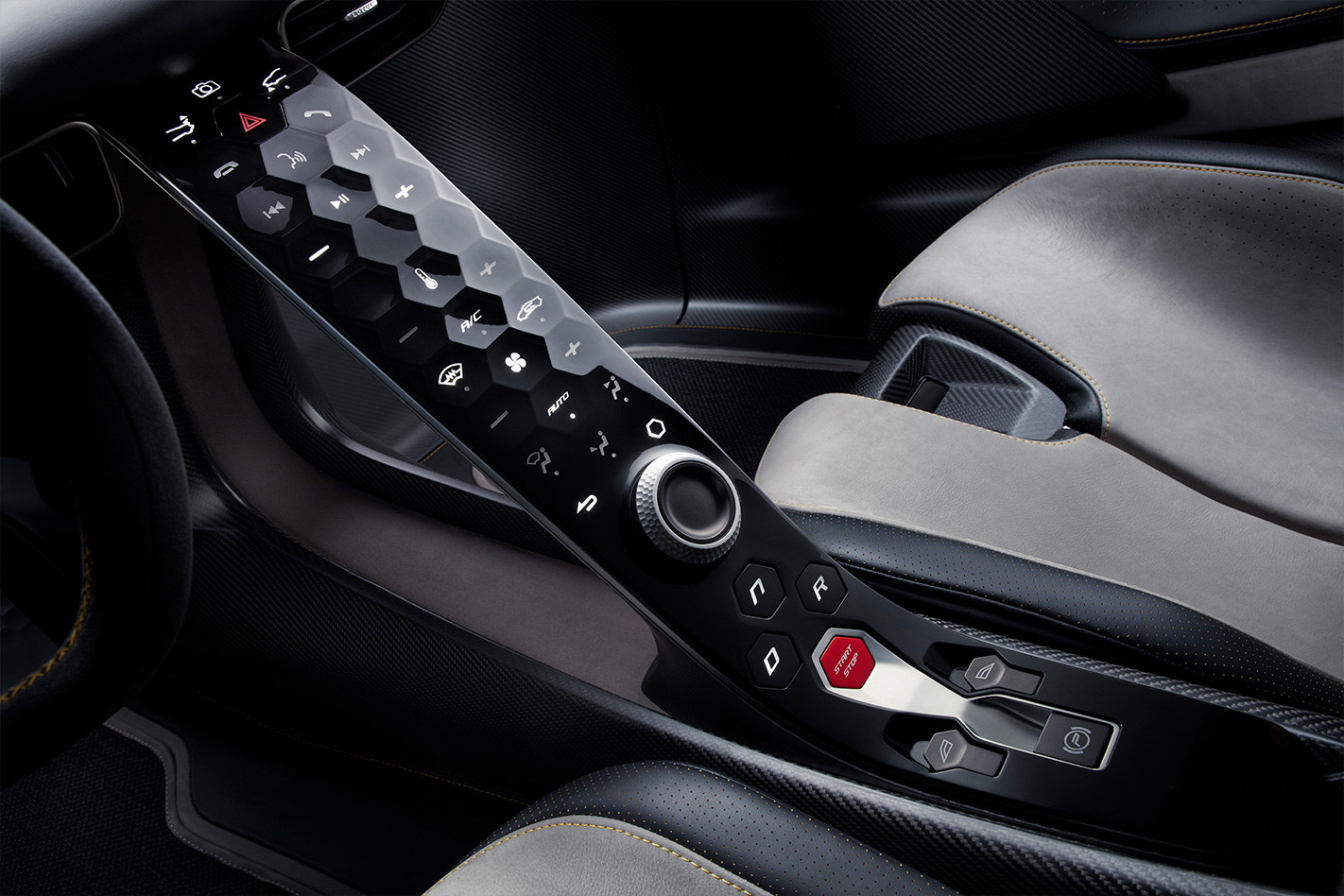
The tiny steering wheel can be specified in either Alcantara or leather finishes and includes a manettino-style mode selector for Range, City, Tour and Sport settings and an array of buttons for phone use, cruise control and DRS deployment. The instrument binnacle houses a digital display, while additional controls are housed on the floating ski slope-style centre console, which features touch-sensitive haptic feedback buttons. Climate control and a premium infotainment system are fitted as standard, as is Apple CarPlay and Android Auto smartphone mirroring. Well, you’d hope so for $3m.
Beneath the slinky bodywork is an electric powertrain developed by technical partner Williams Advanced Engineering, which has earned its spurs by electrifying the first four seasons of Formula E. The battery pack is mid-mounted immediately behind the two seats and supplies energy directly to four e-motors. Lotus claims that it’s the lightest, most energy-dense electric power package ever fitted to a road car.
The target figures of 2000PS and 1700Nm come courtesy of a huge 2000kW lithium-ion battery pack mounted centrally behind the passenger compartment. Like a good internal combustion engine, it can be viewed through a glass rear screen. Power goes from here to an in-line axial arrangement of two high-power-density e-motors. These feature integrated silicon carbide inverters and epicyclic transmission on each axle of the four-wheel-drive powertrain.

A quartet of single-speed helical gear ground planetary gearboxes transfer power to each driveshaft. Supplied by Xtrac, each gearbox comes packaged with the e-motor and inverter as a single cylindrical Electrical Drive Unit (EDU), each e-motor targeted for 500PS (368kW). In other words, each wheel of an Evija marshals the same power as a Porsche 911 GT3.
The four e-motors offer the possibility of sophisticated torque vectoring to any combination of two, three or four wheels. In Track mode, the ability to add more power to individual wheels offers the potential to reduce corner radii, in concert with the ESP stability control system. And the best bit? Despite being an EV, Lotus hasn’t migrated to an electrically assisted steering system. Yes, this unashamedly futuristic car uses an old-school hydraulically assisted steering system. There is a god.
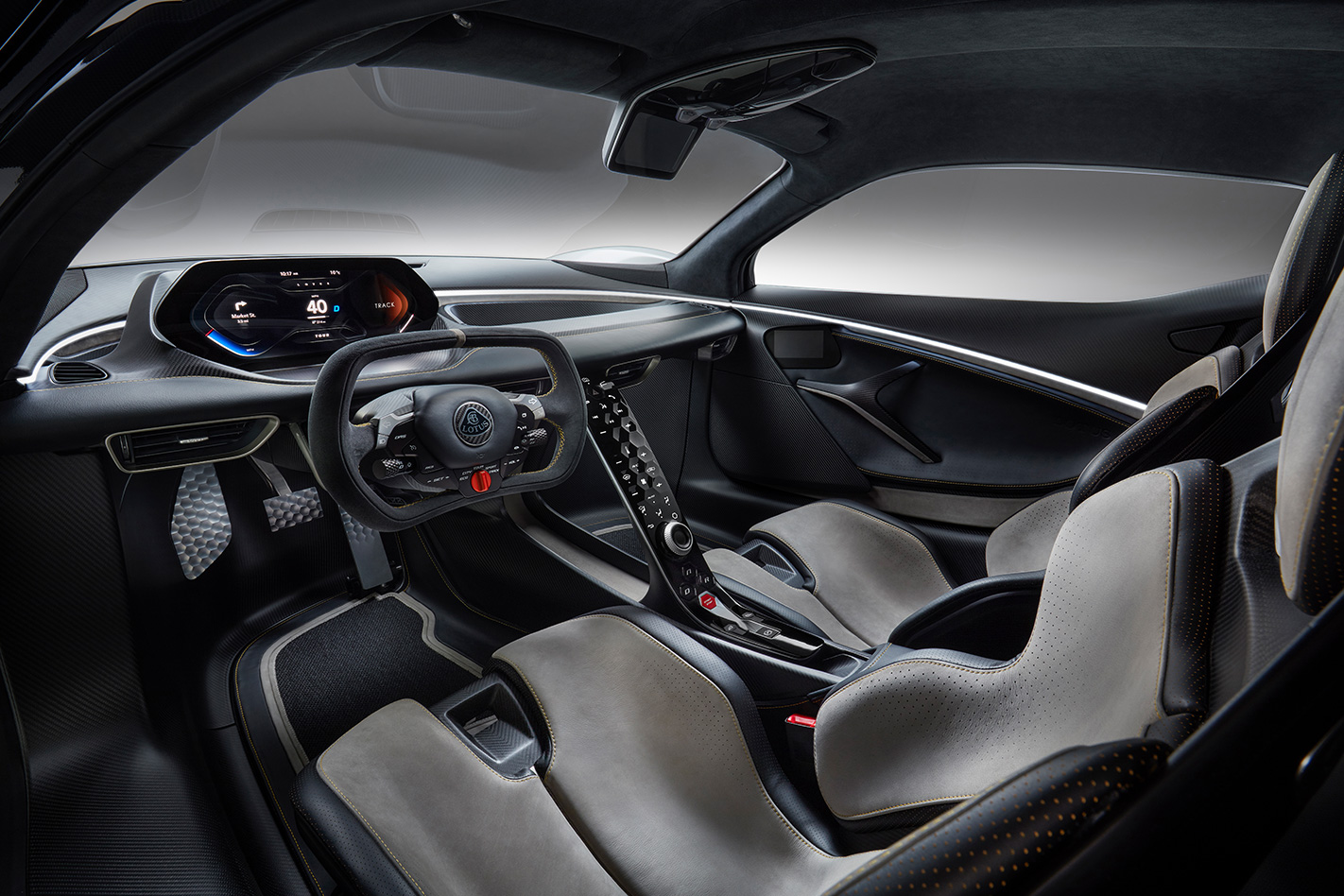
The Evija can get to 300km/h in less than nine seconds, from 100-200 km/h in less than three seconds, and 200-300 km/h in less than four. So it’s properly rapid. Lotus has also worked on ensuring the stability of that energy flow. A combination of aero and the quad-radiator cooling package ensures that the battery resists overheating well. It’ll be good for a hot time-attack lap at just about any racetrack in the world, Lotus claiming the car can be driven flat out with no derate for at least seven minutes in Track mode. Expect a Nurburgring lap claim very shortly.
The battery pack can also be charged extremely quickly, should the necessary hardware be available. Williams Advanced Engineering reckons the pack can accept an 800kW charge which, in theory, would recharge the battery in just nine minutes. Given that a Tesla Supercharger only charges at 150kW, it’ll be a while before chargers with this amount of juice are a regular occurrence.
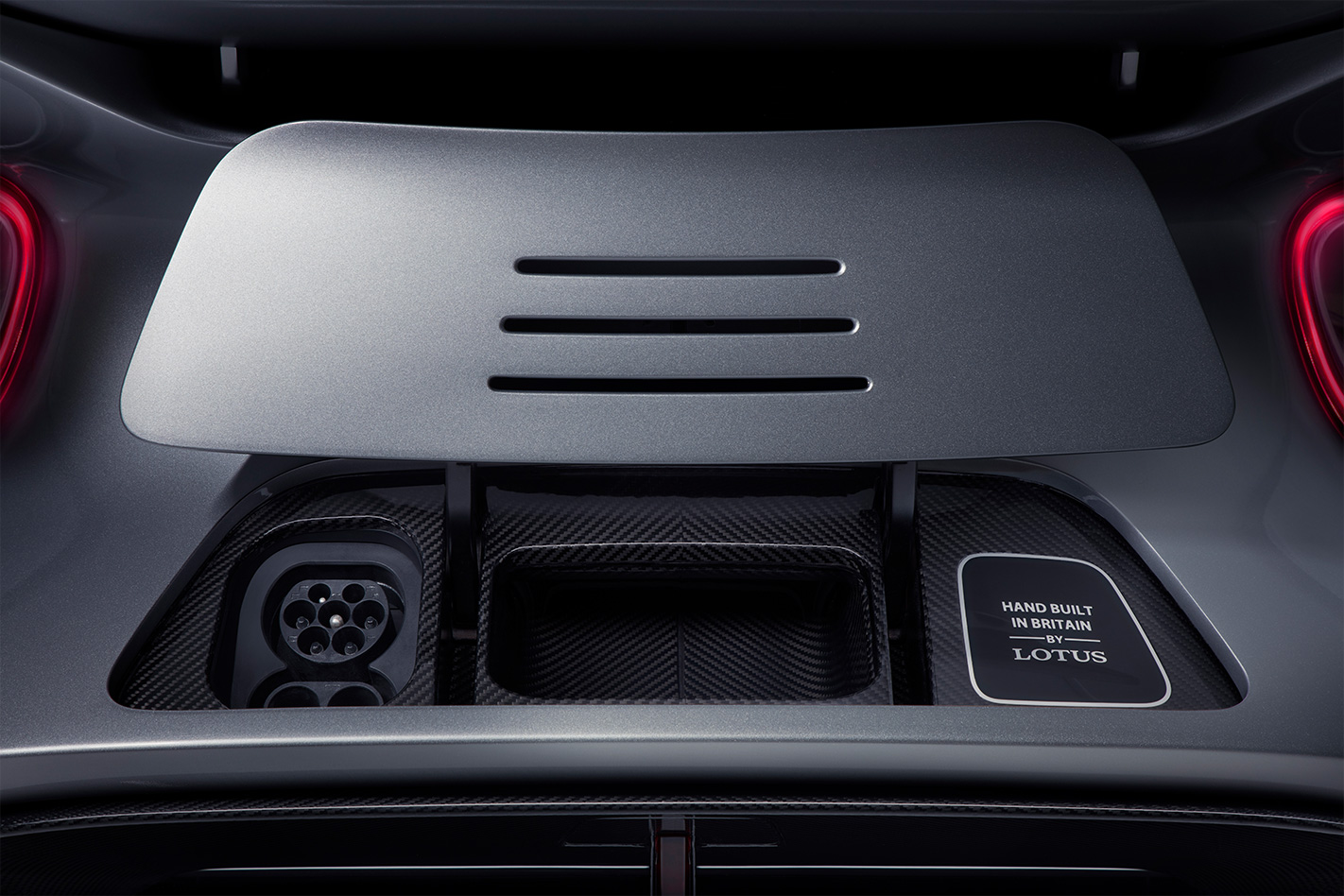
Using a more modest 350kW unit, which is akin to a state-of-the-art Australian Chargefox station, the Evija’s charge time will be 12 minutes to 80 percent and 18 minutes to 100 percent. The car’s range is 400km on the WLTP combined cycle, or 435km on the NEDC combined cycle.
The first major project under new paymasters Geely, the Evija looks the absolute goods. We look forward to getting behind the wheel to let you know whether it lives up to the initial promise. Stay tuned.


